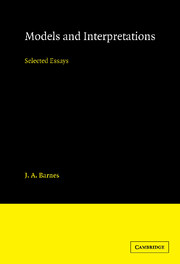Postscript: structural amnesia (1947: 52–3)
Published online by Cambridge University Press: 08 January 2010
Summary
The series of models presented in the foregoing chapters have successively been more abstractly constructed, and more and more remote from the physical world exemplified by the activities of copulation and birth. It may be salutary to end this collection of essays with a reference to a process working in the opposite direction, a process of deconstruction (in a simpler sense than is now fashionable) rather than construction, of forgetting rather than remembering. The following brief statement of what I called structural amnesia is taken from my first professional published paper, dealing with the collection of genealogies in an African matrilineal society. It appeared in 1947 in a journal now hard to find. It is appropriate, I suppose, that the source for a principle of amnesia should itself be forgotten, but I think that the principle is worth re-stating.
One feature that is made immediately apparent by the genealogical method is the extent of structural amnesia among the people under investigation. This phenomenon has been reported from widely separated parts of the world, and may be seen operating in our own society. As has been said ‘a man tends to remember only those links in his pedigree which are socially important and which “place” him at once in the minds of his hearers’ (Culwick and Culwick 1935: 180).
- Type
- Chapter
- Information
- Models and InterpretationsSelected Essays, pp. 227 - 228Publisher: Cambridge University PressPrint publication year: 1990
- 2
- Cited by



